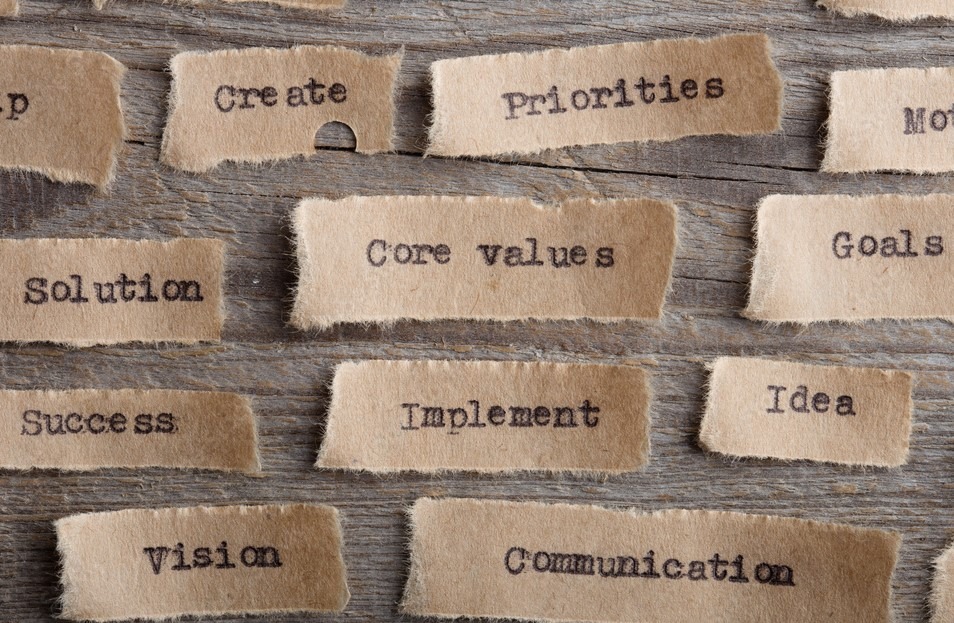Science consistently shows that humans are hardwired for connection with others. Without it, our wellbeing suffers. Moreover, this cross-cultural need for closeness lasts across our lifespans (i.e., beyond a child’s dependency on their caregiver). What differs however, are the ways in which we go about trying to manage this need. Enter: Attachment Theory.
Attachment is unique in that it’s both a leading and longstanding theory in the field of human psychology. It attempts to explain our general relationship styles. More specifically, it helps us understand how we relate to others and how we relate to ourselves (including their/our emotions). It even quenches the commonly shared thirst to understand why we do what we do. And, in cases where our adaptive behaviours aren’t serving us long-term, attachment theory provides insight into healthy alternative ones.
Raising consciousness to what we do and why we do it isn’t alone sufficient for healing, but it is important. Although knowing better doesn’t necessarily mean we’ll do better, we can’t do better if we don’t know better… you know?
The research on attachment and other psychological theories will continue evolving, as is the way of the scientific world. For now, let’s just dip our toes into some basics. But be sure to keep watch for future blog posts, where we’ll dive a little deeper 🙂
Colour Me… Securely AND Insecurely Attached
It’s common for the human brain to quest for safety by trying to simplify our experiences into concrete categories. Adult attachment is no exception. Theorists typically break it down into four “styles”: secure and three versions of insecure. However, the world and life within it prove to be shades of grey (or rather, quite colourful!) time and again. Although we’re starting simply because this is just an introduction to the topic, it’s important to note two things:
(1) Attachment theory is just one of many lenses through which we can view and make sense of our experiences.
(2) The four attachment styles, like most concepts that attempt to explain human experiences, exist on a dynamic spectrum.
An extension of the concept of neuroplasticity (i.e., how the brain is always mouldable), attachment styles are unfixed. That is, they ebb and flow across time and different contexts and relationships. We’re human and therefore complex, so it’s normal to relate to parts of more than one of the following styles. The forthcoming descriptions attempt to capture the more extreme or obvious presentations, so they’re unlikely to feel 100% relatable. Still, we can tend towards a given style even if we can’t relate to all of it.
Making the Unconscious Conscious
Proven through evolution, connecting with others is a key survival adaptation for humans. So, as previously mentioned, we all have attachment needs wired into us from the get-go. In other words, being “needy” is an incredibly natural part of being human. The four attachment styles from which we borrow offer different ways to try meeting these innate needs. Developed partly in response to our early life experiences, attachment styles showcase both creative and largely unconscious (initially) adaptative skillsets. Understandably, different life experiences require different adaptations. So, here’s a snapshot of how our nervous systems can maneuver in all kinds of relationships (e.g., familial, platonic, romantic). Let’s start making the unconscious conscious—see if you can notice similar patterns of triggers and reactions within your own nervous system.
The Styles in a Snapshot
1. Secure Attachment
Psychologists typically characterize secure attachment as being (1) comfortable with emotional closeness, and (2) unafraid of relationship failure (i.e., rejection, abandonment, loss). Someone with this style finds it easy enough to build trust with others and relax into relationships. They feel hopeful that relationships will work, and faith in their own ability to move forward even if they don’t. Such confidence allows them to be very present in their relationships and enjoy them to the fullest. Relationships are deemed to be just one of many important aspects of a securely attached person’s life.
A securely attached person sees themselves and others as equals. They attune to others’ wants and needs, and work to honour and communicate their own. They view conflict as an opportunity to ultimately deepen intimacy, and when approaching tensions, they’re generally respectful. Overall, someone with this style has a balanced view of themselves and others as imperfect-but-innately-good humans. They practice healthy mental, emotional, and physical boundaries with themselves and others.
2. Anxious Attachment (sometimes called “Preoccupied” or “Ambivalent”)
Psychologists typically characterize anxious attachment as being (1) unquenchably thirsty for emotional closeness, and (2) quite afraid of relationship failure. Trust doesn’t come easy to someone with this (or any other “insecure”) style. It’s hard for them to be present and relax into relationships because they’re preoccupied with fears of losing their partner. Although they hold hope that a relationship will work, almost too much emphasis is placed on that outcome. Their sense of self is tied up in it.
A desperate longing for closeness mixed with mistrust in another’s liking of them contributes to a high need for reassurance for someone with an anxious style. Such approval-seeking (i.e., connection-seeking) shows up in a variety of ways- some explicit, others more subtly disguised (called “protest behaviours”). Consequently, anxiously attached individuals are often labelled as “needy,” “clingy,” “high maintenance,” “demanding,” or “critical.” (Oversimplifications).
The ability to notice threat serves a helpful evolutionary function, or it wouldn’t be an adaptation in the first place. However, it can create long-term problems when overused (i.e., wrong time, place, and/or person). The anxious nervous system is wired to be hyperaware of cues that could suggest pending disapproval, rejection, or abandonment. Unfortunately, this means anxiously attached people often misinterpret neutral stimuli as negative.
An anxiously attached person also has quite fluid (or “enmeshed”) mental, emotional, and physical boundaries. They often over-function to meet what they perceive others’ wants/needs to be, in false hopes of securing love and connection. In this way, they often regard others more highly than themselves and risk self-abandonment.
3. Avoidant Attachment (sometimes called “Dismissive”)
For some people, meeting their attachment needs actually involves trying to turn off (i.e., suppress) those same needs. Thus, psychologists typically characterize avoidant attachment as being (1) afraid of emotional closeness, and (2) seemingly unaffected by relationship failure. (“Seemingly” is a key word here). Because of their restricted emotional range (again, an adaptation), communication can be quite intellectual or pragmatic for avoidantly attached individuals, especially during conflict.
Like anxiously attached individuals, someone with an avoidant style can also have a hard time relaxing into relationships. However, it’s because their nervous system is hyperaware of losing themselves within them. Although they also value relationships, an avoidant individual may prefer lighthearted, fun, and playful connections for fear of drowning in something deeper.
Avoidantly attached people mistrust others as being able or willing to show up for them, no strings attached. In addition to denying their own needs for help, they dismiss interactions wherein someone else requires much from them. In this way, they have quite rigid boundaries and seem to really value their own independence and freedom. Consequently, avoidantly attached individuals are often labelled as “selfish,” “superficial,” “arrogant,” “cold,” “non-committal,” or “robotic.” (Again, oversimplifications).
Outward confidence often masks core feelings of shame, failure, and disappointment for those with an avoidant style. These entrenched vulnerabilities are what they’re actually (subconsciously) working to avoid being activated. The avoidant nervous system sometimes reasons: No commitment = no responsibility = no one to let down or be let down by.
4. Anxious-Avoidant Attachment (sometimes called “Fearful-Avoidant” or “Disorganized”)
Although it is the rarest of the identified styles, some people adapt in equally anxious and avoidant ways. Someone with this combined attachment style both intensely craves and intensely fears closeness. Such conflicting needs create a lot of internal confusion (i.e., disorganization) and significant distress.
More of an explanation than an excuse, disorganized attachment has been commonly linked to early childhood abuse. Children face an unsolvable dilemma when they’re naturally wired to depend on and seek comfort from their source of distress. When a caregiver’s behaviour is so unpredictable, a child’s self-concept and coping mechanisms adapt accordingly.
Those with anxious-avoidant tendencies face both sets of challenges that each of anxiously and avoidantly attached individuals do. Because the anxious-avoidant brain struggles to see both themselves and others in a positive light, their nervous system is frequently “on.” Those with this disorganized style often have great difficulty regulating their big emotions and present with unpredictable moods. Their attempts to regulate are often confusing and overwhelming to others. As a result, they are often misunderstood as being “chaotic,” “dramatic,” or “manipulative.”
How do we develop Secure Attachment?
Most of us can find ourselves somewhere in the above descriptions of insecure attachment, to varying degrees. If you could relate to more of an insecure description than the secure one, then we have good news! There’s room for healing in your nervous system 😊 (Unstuck’s Psychologists get pretty excited about that…). One of our greatest skillsets is providing “corrective relational experiences,” which can rewire the brain/body in more secure ways.
If this idea interests you and you’d like to learn more about our processes, email or call us today! Our Front Desk Staff can book you in with a specific Psychologist for a risk-free consultation (RFC). What does that mean? You get 50 minutes to test out the “attachment potential” with your Psychologist before committing to the therapy process. You ask questions, they ask questions, and you decide together if it feels like a good fit, no strings “attached.”
Shayla Drewicki, MC, RPsych











